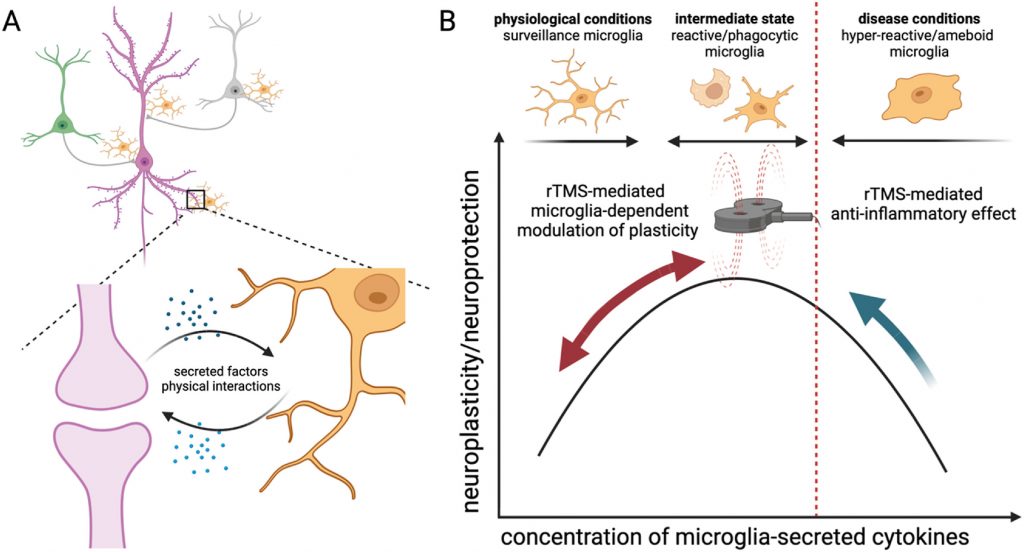In our new review, we explore how repetitive transcranial magnetic stimulation (rTMS)—a non-invasive technique that uses magnetic fields to stimulate brain activity—affects microglia, the brain’s immune cells. These cells play a key role in maintaining healthy brain function, supporting plasticity, and responding to injury or disease.
The schematic below illustrates how rTMS may stimulate neurons to release signals that prompt microglia to support plasticity and reduce inflammation—opening up exciting possibilities for treating neurological and psychiatric disorders.

This schematic shows how repetitive transcranial magnetic stimulation (rTMS) may influence microglia—the brain’s immune cells—to support neuroplasticity and reduce inflammation. rTMS can trigger neuronal activity that prompts microglia to release signaling molecules (cytokines), which help strengthen synaptic connections and protect neurons. Importantly, rTMS may also shift microglia toward anti-inflammatory states, contributing to a more supportive environment for brain repair and functional recovery.
Continue reading the full article here.
